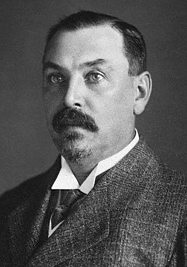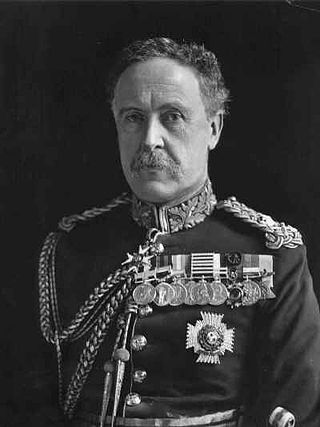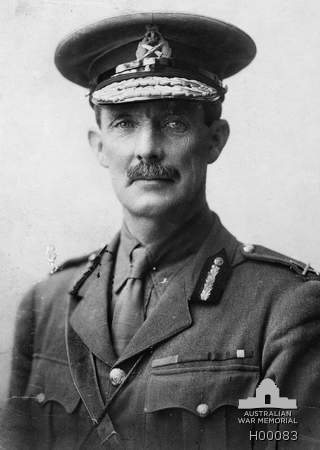
The South African Republic, also known as the Transvaal Republic, was an independent Boer republic in Southern Africa which existed from 1852 to 1902, when it was annexed into the British Empire as a result of the Second Boer War.

The Second Boer War, also known as the Boer War, Transvaal War, Anglo–Boer War, or South African War, was a conflict fought between the British Empire and the two Boer republics over the Empire's influence in Southern Africa.

The Orange River Colony was the British colony created after Britain first occupied (1900) and then annexed (1902) the independent Orange Free State in the Second Boer War. The colony ceased to exist in 1910, when it was absorbed into the Union of South Africa as the Orange Free State Province.

Major-General John Lambert was an English military officer and politician. Widely regarded as one of the most talented commanders of the era, he fought on the Parliamentarian side throughout the Wars of the Three Kingdoms, and was largely responsible for the English victory in the Anglo-Scottish war of 1650–1652.

The First Boer War, was fought from 16 December 1880 until 23 March 1881 between the United Kingdom and Boers of the Transvaal. The war resulted in a Boer victory and eventual independence of the South African Republic. The war is also known as the First Anglo–Boer War, the Transvaal War or the Transvaal Rebellion.

Louis Botha was a South African politician who was the first prime minister of the Union of South Africa, the forerunner of the modern South African state. A Boer war veteran during the Second Boer War, Botha eventually fought to have South Africa become a British Dominion.

Estcourt is a town in the uThukela District of KwaZulu-Natal Province, South Africa. The main economic activity is farming with large bacon and processed food factories situated around the town. The N3 freeway passes close to the town, linking it to the rest of South Africa.

General Sir Redvers Henry Buller, was a British Army officer and a recipient of the Victoria Cross, the highest award for gallantry awarded to British and Commonwealth forces. He served as Commander-in-Chief of British Forces in South Africa during the early months of the Second Boer War and subsequently commanded the army in Natal until his return to England in November 1900.

The siege of Ladysmith was a protracted engagement in the Second Boer War, taking place between 2 November 1899 and 28 February 1900 at Ladysmith, Natal.
The following lists events that happened during 1901 in South Africa.

The Battle of Talana Hill, also known as the Battle of Glencoe, was the first major clash of the Second Boer War. A frontal attack by British infantry supported by artillery drove Boers from a hilltop position, but the British suffered heavy casualties in the process, including their commanding general Sir William Penn Symons.

Cavalcade is a 1933 American epic pre-Code drama film directed by Frank Lloyd. The screenplay by Reginald Berkeley and Sonya Levien is based on the 1931 play of the same title by Noël Coward. The film stars Diana Wynyard and Clive Brook.

The Directorate of Military Intelligence (DMI) was a department of the British War Office.
Lieutenant-Colonel Sir Cecil Bingham Levita was a British soldier and public service worker who eventually rose to be chairman of the London County Council in 1928.

General Sir Neville Gerald Lyttelton, was a British Army officer from the Lyttelton family who served against the Fenian Raids, and in the Anglo-Egyptian War, the Mahdist War and the Second Boer War. He was Chief of the General Staff at the time of the Haldane Reforms and then became Commander-in-Chief, Ireland.

Major General Sir Edward Walter Clervaux Chaytor, was a farmer, and a military commander of New Zealand troops in the Boer War and the First World War.

The Second Anglo-Burmese War or the Second Burma War was the second of the three wars fought between the Burmese Empire and British Empire during the 19th century. The war resulted in a British victory with more Burmese territory being annexed to British India.

The Battle of Preston, fought largely at Walton-le-Dale near Preston in Lancashire, resulted in a victory for the New Model Army under the command of Oliver Cromwell over the Royalists and Scots Engagers commanded by the Duke of Hamilton. The Parliamentarian victory presaged the end of the Second English Civil War.

Lieutenant-General Sir William Penn Symons KCB was a British Army officer who was mortally wounded as he commanded his forces at the Battle of Talana Hill during the Second Boer War. While his forces won the battle, they had to abandon their position and fall back to Ladysmith. Symons and the more severely wounded were left to the Boers; he died three days later.. A monument to his valour was raised in Victoria Park, Saltash, Cornwall, UK.

The Boer War Memorial in Canberra, Australian Capital Territory, is on Anzac Parade on the western row of memorials near Lake Burley Griffin. This commemorates the Military history of Australia during the Second Boer War, 1899-1902.

















